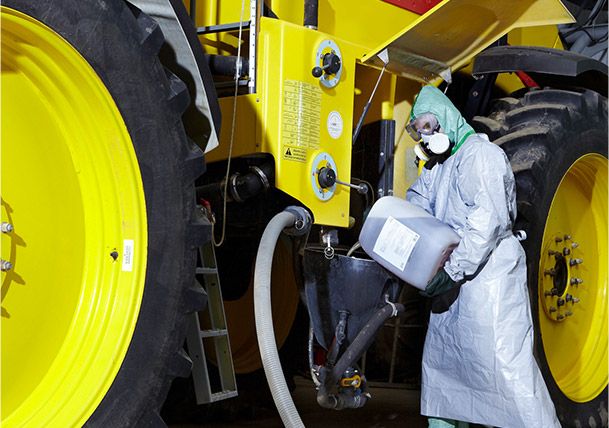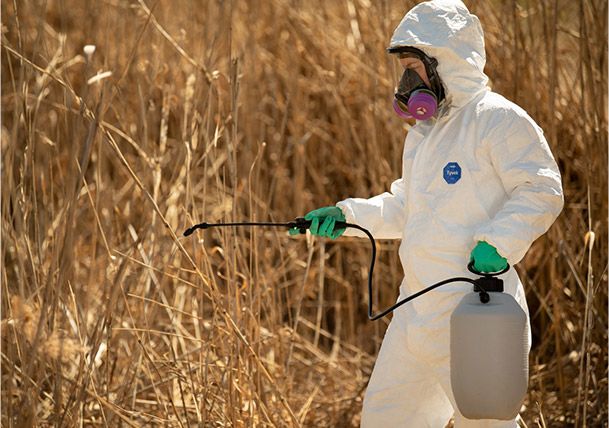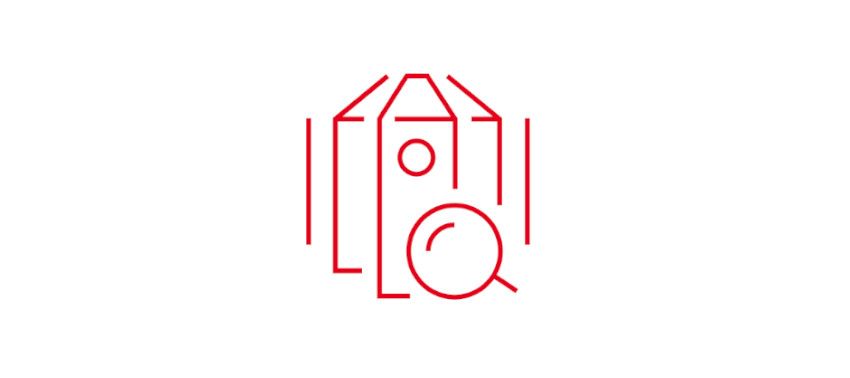Agriculture protection
Workers in the agricultural sector face two particularly dangerous types of risks.
Although typical viral diseases amongst animals (swine fever, foot and mouth disease, fowl plague, etc.) cannot be transmitted to humans, people working in close contact with infected animals can easily carry (cross-transmit) the virus elsewhere. Many of these viruses can be carried on skin, hair and clothing, and can remain active for extended periods.
Additionally, the use of phytosanitary products to preserve crops makes agriculture one of the most dangerous professions. Therefore, anybody working with pesticides or animals should always wear the appropriate personal protective equipment.
Protection against phytosanitary products

When using phytosanitary products, it is recommended that CE category III type 4 chemical protective coveralls (against aqueous liquid aerosols) are used as a minimum. Category III type 4 protection provides effective protection against a range of aqueous (type 4) liquid aerosols, and active ingredients in solid particle form (type 5), and limited protection against liquid spraying (type 6).
Because the risk of exposure to lower or higher concentrations of active materials, solvents or diluents is especially high during preparation, application, cleaning, tank emptying and spray malfunctions, it is recommended that an apron or gown with an adequate chemical permeation barrier is worn over the coverall to protect the most exposed areas of the body against organic chemicals.
When choosing the right PPE, the chemical permeation data for the barrier fabric and phytosanitary product and diluent should be consulted.

Protection against animal-borne hazards
Infective particles can be carried in many ways, even in dust, which is why workers and visitors need constant protection. Many coveralls, particularly those with inadequate seams, allow dust to penetrate—putting wearers at risk.
DuPont™ Tyvek® 600 garments provide an excellent, particle-tight barrier that includes particle-tight seams. And with over-taped seams and the option to seal the zipper area with a self-adhesive flap, Tyvek® 600 provides ideal protection when wet decontamination is not required.
For veterinarians, farmers and other workers who come in contact with live animals, infected feces or body fluids, or the bodies of dead animals, liquid impervious suits are preferred. DuPont™ Tychem® 2000 fabric has passed all relevant bio-barrier tests according to EN 14126 (at the highest performance levels), and the seams and closures of Tychem® 2000 garments have passed a 3-bar liquid pressure test, providing liquid-tight performance during an entire working shift.
Decontamination with disinfectants
Decontaminating protective clothing after use is important for safeguarding wearers against various types of cross-contamination and reducing the spread of disease-causing pathogens such as avian influenza and Foot and Mouth Disease.
Tychem® garments
For protection against chemical dangers, industrial workers rely on DuPont™ Tychem® garments.
Tyvek® protective apparel
Tyvek® helps offer an ideal balance of protection, durability and comfort to employees in industrial applications and contamination control environments, including manufacturing, pharmaceutical, automotive and utilities.


